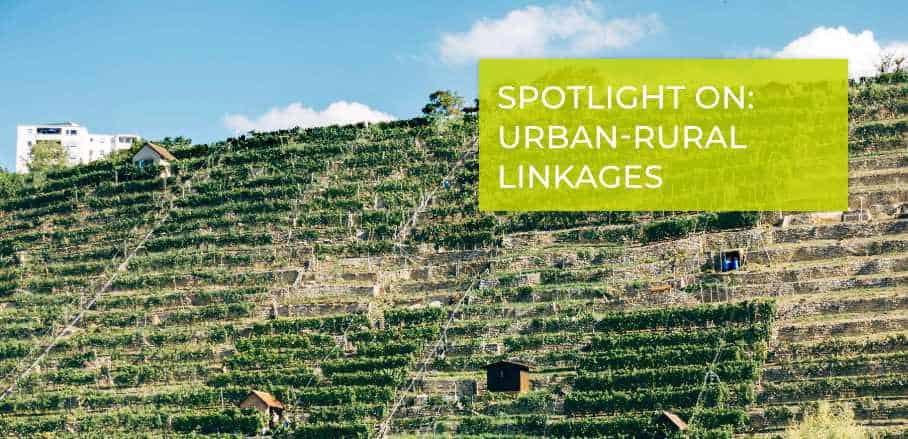Towards a Symbiotic Urban Form: the Smart Ruralopolis
A fresh perspective on urban-rural linkages allows us to re-envision urban fringe areas as zones for innovative businesses, growth, and prosperity. By Kaustubh Das
Urbanisation plays a key role in eradicating rural poverty. According to the 2016 UN-Habitat World Cities Report, urban-rural connections have been responsible for a 13–25 per cent decrease in rural poverty in India in recent decades. Cities are arguably the engines of our economies, generating maximum employment and making a sizable contribution to nations’ overall development, especially in emergent economies: urban economic activities generate up to 55 per cent of the gross national product in low-income countries and up to 73 per cent in middle-income countries.
While this seems promising in terms of poverty alleviation, it is disturbing to observe the parallel increase in global poverty alongside rapid urbanisation, especially in the most rapidly urbanising cities of lower-income nations in the Global South. With well-documented evidence demonstrating a strong correlation of urbanisation with the wealth of societies, it is imperative to look at urban-rural linkages in greater detail. One such important detail is how we view and use our cities peripheral areas.
Rethinking Peripheral Urban Areas
Cities typically expand geographically to allow for growth. While this may seem inevitable for progress, sadly this often invades into natural and agricultural land, upsetting the ecological balance. In addition, cities across the globe rarely offer dignified shelter to migrants, forcing them to retreat into informal settlements often found in city fringe areas due to the lack of decent legal housing. This may not only damage ecologically sensitive areas not intended for housing, but often makes residents more vulnerable to both natural and man-made disasters like epidemics.
Taking this as a given: How can we rethink our cities’ peripheries? To promote new and holistic perspectives on urban-rural linkages and boost sustainable growth, fringe areas can be re-envisioned as the new “ruralopolitan belt”.
Ruralopolis over Metropolis?
As the name suggests, the word is derived from an etymological fusion between the words rural and metropolitan. Jean Gottman defined Metropolis as a clustered network of cities. A similar analogy is extended to include urbanised rural areas (Ruralopolitan) whose networks create a Ruralopolis –but since the magnetism of the urban is stronger, it functions as a part of the metropolis.
Rethinking our peripheries as a “ruralopolitan belt” could combine the best of both contexts and offer us new opportunities – such as situating new urban farms and innovative agribusiness in peripheral zones, along with civic amenities for basic living like schools and healthcare facilities. While one may still need to commute to the “mother city” for higher education, medical care and corporate jobs, the new and improved ruralopolitan belt can offer the efficiency of a compact city with the pastoral charm of suburban life. Moreover, ICT systems offer us the luxury of instantaneous communication irrespective of location. Home Office or shared neighbourhood offices thus become a feasible option for many. This makes a more fragmented city fabric possible.
A SMART Approach can be undertaken to also create an intelligent “ruralopolitan belt” that can act as a new urban-rural interface and address some of our most important challenges. Contemporary agricultural practices using technology like hydroponics and aeroponics have proven the efficacy of vertical farms occupying only a fraction of land. Already popular in many cities across the world, they offer the advantage of pesticide-free and nutrient-rich produce that can be grown year-round and, in the case of some farms in London, even underground.
The Benefits are Manifold
Therefore, making use of city fringes as ruralopolitan areas and promoting agribusinesses offers many advantages:
- By having a defined function, the fringe area is less prone to encroachment but functions as a healthy transition zone, which offers a variety of lifestyles.
- With vertical farms, a lot of land in rural areas can be used for natural vegetation and forest. While the systems may not cultivate staples like rice or wheat, they can surely produce vegetables, fruits, and leafy greens.
- Providing food security while also increasing tree cover by opening more areas for potential forests is also very effective to reverse the effects of global warming.
- Situating businesses in urban fringe areas, as well as the freight and movement of goods back and forth, does not create additional congestion or pollution in the cities. Integration with warehouse and bulk storage facilities typically located in fringe areas can ensure a smooth supply chain and efficient logistics.
- Last but not least, it provides additional employment for local residents and migrants alike.
By envisioning urban fringe areas as zones of innovation rather than zones of ambiguity, they can be fashioned as areas offering affordable and basic urban infrastructure and facilities. Connected with the metropolitan core via efficient communication systems, they can act as buffers, insulating the city from saturation while offering growth and wellbeing for residents.
Since strong urban-rural linkages have been observed to have a positive effect on poverty alleviation, our cities must establish even stronger urban-rural linkages for prosperity and growth. The smart ‘ruralopolis’ can be one such way.
- Towards a Symbiotic Urban Form: the Smart Ruralopolis - 4. November 2021
